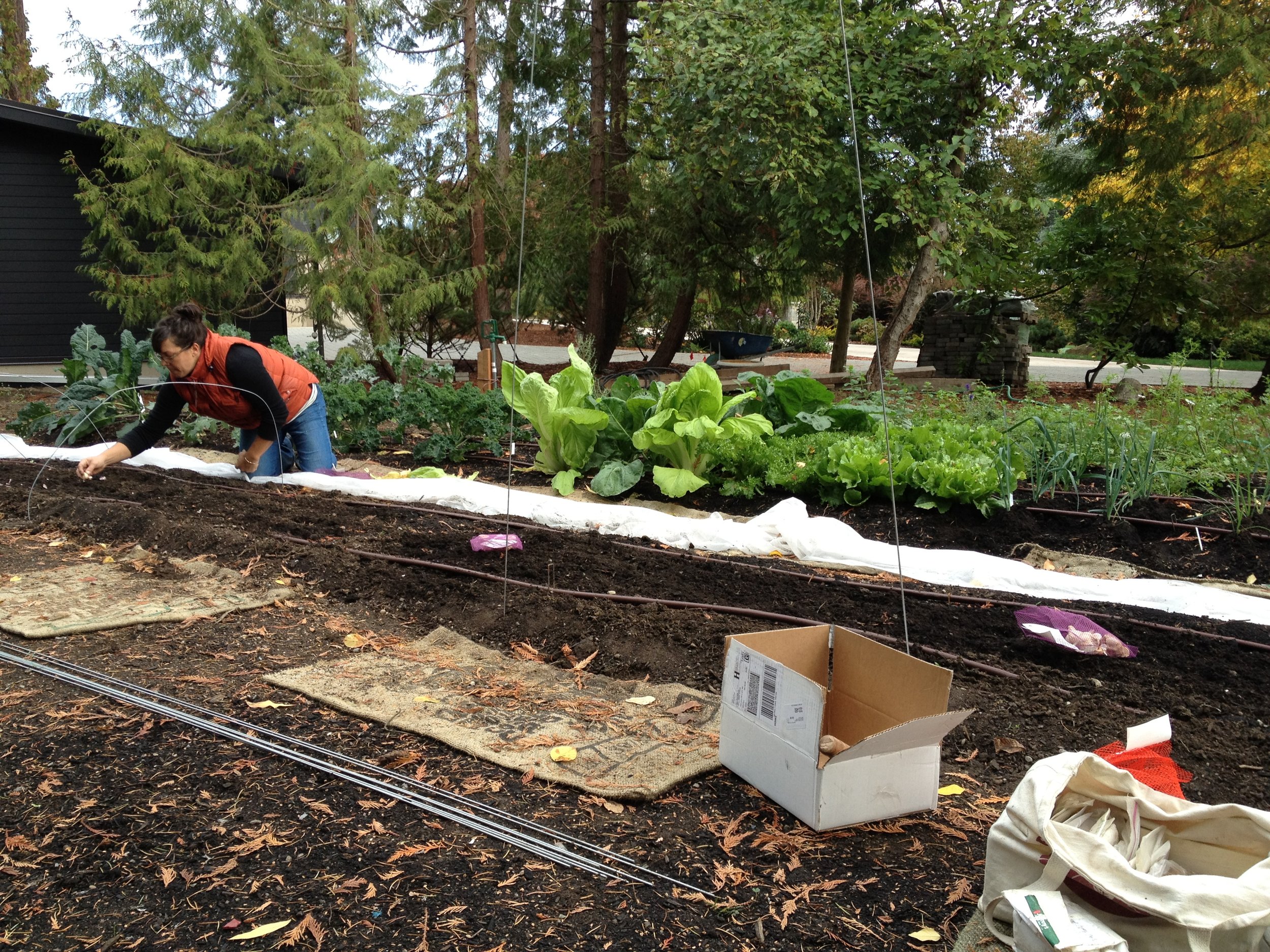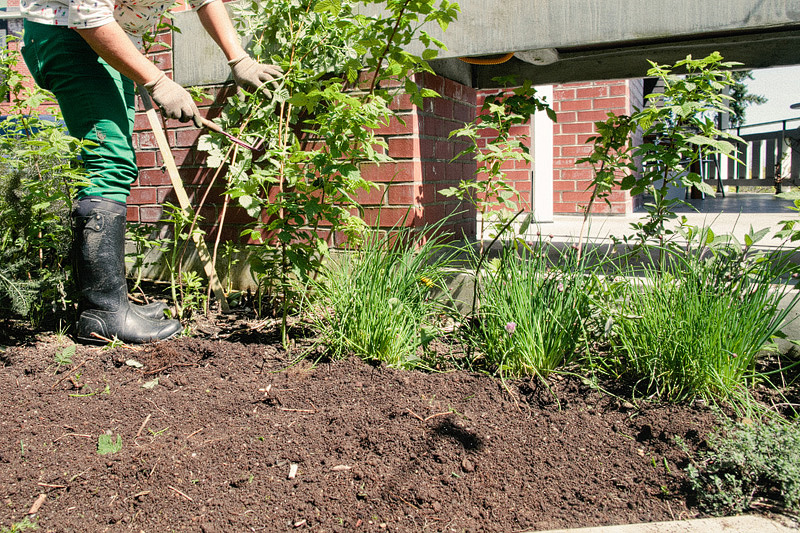Winter Transition in the Garden - How-To
 Here in the Pacific NW we've had the good fortune of a relatively mild autumn, while on the east coast it snowed this week. Regionally, garden news will vary in terms of timing - I still have tomatoes in the ground in gardens here in Seattle, but everyone should (or should have!) work to transition their gardens this week or next.
A winter garden transition essentially rids the beds of any lingering summer crops and any plants that will not over winter. In their place, it is best to cover and protect the soil. You can do this by ...mulching - adding a layer of autumnal leaves or a sack burlap directly over your soil. Sowing cover crop will also generate a green mulch, one that you can chop into the soil for green compost next spring. Choose a cover crop mix (often sold in bulk at small nurseries) of cereal (rye, barley), vetch and favas.
Here in the Pacific NW we've had the good fortune of a relatively mild autumn, while on the east coast it snowed this week. Regionally, garden news will vary in terms of timing - I still have tomatoes in the ground in gardens here in Seattle, but everyone should (or should have!) work to transition their gardens this week or next.
A winter garden transition essentially rids the beds of any lingering summer crops and any plants that will not over winter. In their place, it is best to cover and protect the soil. You can do this by ...mulching - adding a layer of autumnal leaves or a sack burlap directly over your soil. Sowing cover crop will also generate a green mulch, one that you can chop into the soil for green compost next spring. Choose a cover crop mix (often sold in bulk at small nurseries) of cereal (rye, barley), vetch and favas.
Below, I have a few bullet pointed items for winter transition. If you like them well enough, let me know in the comments and I can expand the section to include your landscape plants, trees and shrubs. (Or maybe even your rosemary and sage bushes that are out of control??)
- It's not too late to plant garlic. Plant single cloves about 6 to 8 inches apart, and push them (tips up) about 2 inches below the surface.
- Collect flower head seeds and save the seed if so inclined. Work methodically, as seeds are easily dropped and it is NO fun weeding out 100s of borage plants in February, trust me on this!
- Remove all of your annual plants and compost them.
- Cut back perennial plants like thyme, sage and oregano. As leaves dull and brown, you can trim off their woody stalks at the ground. Take care not to cut off any new shoots - those will put on slow growth through the season.
- Remove all summer crops from the beds - green tomatoes can be harvested and stored in a bucket in the garage, where they will ripen slowly. Check for ripe tomatoes daily, as they will break down and mold/rot easily if not removed.
- Mulch strawberry plants with a covering of dry hay. You can find this at Walt's Organic in Ballard, or try your local hardware store. Sprinkle a layer directly over the strawberries, but no more than a few inches deep, which can smother plants. Plan to mulch as the temperature continues to drop, so put it on your list for late November/early December.
 - Cut back any dead raspberry canes. Dead canes are those that have fruited and/or have brown, brittle canes. Thin remaining canes (choosing the thickest and strongest) so there is one every 6-inches, leaving them room for them to grow in and receive sun. Lastly, you must tip or trim the canes, using sharp pruners, to about 4 or 5 feet in height.
- Cut back any dead raspberry canes. Dead canes are those that have fruited and/or have brown, brittle canes. Thin remaining canes (choosing the thickest and strongest) so there is one every 6-inches, leaving them room for them to grow in and receive sun. Lastly, you must tip or trim the canes, using sharp pruners, to about 4 or 5 feet in height.
- Mulch all overwintering vegetable garden beds with dry leaves or hay, being careful to leave a bit of space around the stem of each plant.
